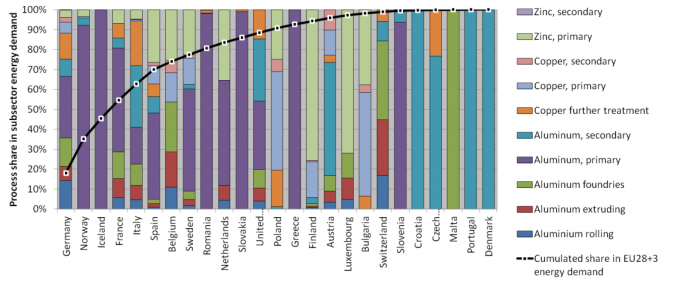FORECAST/eLOAD
-
07.08.2020 Industrial excess heat for district heating: Database shows great potential for supplying households
Excess heat from energy-intensive industries is often suitable for use in district heating systems but is usually unutilized. A detailed overview of the potentials available in the EU is now provided by a database of the sEEnergies project. In Germany, 29 petajoules of excess heat from industrial sites could be used, which corresponds to the demand of more than half a million households. The information is available as maps and downloadable datasets.
New peer-reviewed publication in journal Energy Efficiency: A bottom-up estimation of the heating and cooling demand in European industry
22.11.2017
Details matter: How the analysis at process level yields different results to aggregated subsector approaches. This and other questions regarding industrial heating and cooling demand are answered in this new FORECAST-related publication
The paper presents a further analysis of the results of the project
"Mapping EU heat supply", in which FORECAST was applied to obtain a
comprehensive picture of the EU's heating and cooling sector. More results are
available at the project website.
The paper focuses on methodological aspects concerning the
disaggregation of energy balances (end-use, temperature levels) in the
industrial sector and compares the obtained insights with earlier publications
and available end-use balances. It highlights that the process-specific
bottom-up (BU) approach delivers the level of detail required to reflect
subsectoral differences among countries, e.g. in the non-ferrous metals
industry (see figure).
The analysis at the level of individual subsectors shows distinct patterns of energy carrier use and temperature level. Both these aspects restrict the technologies and efficiency potentials that can be applied. The knowledge about these restrictions and their implications for energy modelling will be of ongoing interest in the future modelling of industrial heat supply.
The paper is available at SpringerLink:
Rehfeldt, Matthias; Fleiter, Tobias; Toro,
Felipe (2017): A bottom-up estimation of the heating and cooling demand in
European industry. In: Energy Efficiency 45 (2012), p. 786.
DOI:
10.1007/s12053-017-9571-y.

© 2024 Fraunhofer ISI | Publishing Notes | Data Protection


